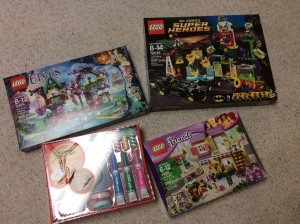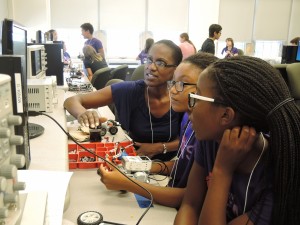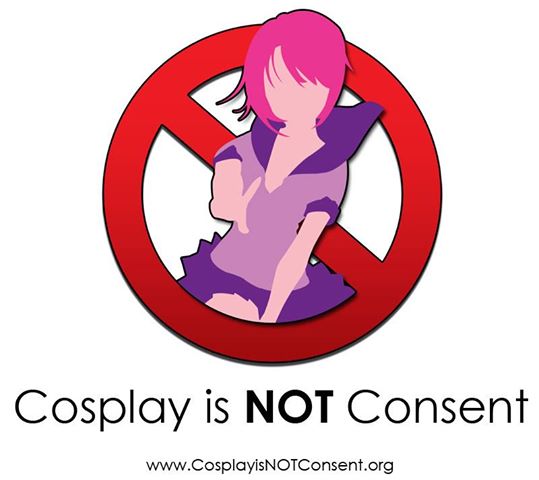A couple of weeks ago, I was both surprised and not surprised when the story about Target and the gendered toy signs blew up. I was not surprised because I know many people still cling to traditional view of gender and toys, but I was surprised by the level of rage that followed Target’s announcement. I talk a lot about the variety of toys that I played with as a child (and still do as an adult), but I never really experienced much weirdness because of my toys choices. (Playing with LEGO as an adult is a different matter altogether.) I think that, in my experience, a girl playing with a toy meant for boys is less scary to society at large than a boy playing with a toy meant for a girl. A girl playing with Hot Wheels is a tomboy, you see, while a boy playing with a doll, well…that leads to “problems.”
 What those “problems” are, I think, is actually hard to nail down. I’ve often heard the surface argument that dolls might turn a boy gay, which is ridiculous, but I think that argument just begs the question…why would that be? Why do people think that? We are moving beyond these narrow beliefs, right? Maybe not. Last week, I ran across this thread on the LEGO Reddit. The picture shows a LEGO Elves Set, a LEGO Friends set, and the LEGO Jokerland Set. The title reads “Going to have a very happy 5 year old soon.” Most of what I read on Reddit involving girls and LEGO is extremely positive. Posts about girls playing with LEGO are often met with responses such as “Yay, it’s great when you can get your daughters interested in LEGO.” And, reading these posts on Reddit makes me happy. Not because girls and LEGO is a new thing, but because the idea that girls wouldn’t like LEGO is a relatively new idea. I tend to focus my discussion of gender and toys around girls and what the gender divide in toys means for girls, but one comment on this Reddit post got me thinking about what it means for boys, which then, for me, circles back to what it means for girls, again:
What those “problems” are, I think, is actually hard to nail down. I’ve often heard the surface argument that dolls might turn a boy gay, which is ridiculous, but I think that argument just begs the question…why would that be? Why do people think that? We are moving beyond these narrow beliefs, right? Maybe not. Last week, I ran across this thread on the LEGO Reddit. The picture shows a LEGO Elves Set, a LEGO Friends set, and the LEGO Jokerland Set. The title reads “Going to have a very happy 5 year old soon.” Most of what I read on Reddit involving girls and LEGO is extremely positive. Posts about girls playing with LEGO are often met with responses such as “Yay, it’s great when you can get your daughters interested in LEGO.” And, reading these posts on Reddit makes me happy. Not because girls and LEGO is a new thing, but because the idea that girls wouldn’t like LEGO is a relatively new idea. I tend to focus my discussion of gender and toys around girls and what the gender divide in toys means for girls, but one comment on this Reddit post got me thinking about what it means for boys, which then, for me, circles back to what it means for girls, again:
“I read that as 5 year old son. Saw Jokerland first and then became confused by the others.”
The comment stuck with me, not because it was mean spirited, but because it seems to demonstrate a reflexive attitude that it’s now at least somewhat acceptable for girls to explore and play with a variety of toys, but the same is not necessarily true for boys. That is, the commenter would be confused by a boy playing with LEGO Elves or Friends sets, but not so confused by a girl playing with LEGO Jokerland.
Why not?
After pondering this, I think it comes down somewhat to privilege. The way toys are marketed and the specific toys that fall on one side or the other of the gender divide reflect the way society has traditionally thought of the roles of each gender. Boys are expected to be non-nurturing and grow up to have great careers, such as doctor, engineer, lawyer, etc. While girls are expected to be nurturing and want to care for others and grow up (according to society) to be great caregivers, which mostly means being stay-at-home mothers (according to the traditional gender roles). I think as a society, we have come far enough that it’s mostly acceptable for women to have careers outside the home, as long as it ultimately doesn’t interfere with the raising of the children. But, boys don’t have this same expectation to put the care of children first.
 And, this is where I think the privilege comes into the attitudes and fear surrounding boys playing with toys meant for girls. If a girl wants to play with LEGO Mindstorms, she is moving out of the traditional role of caregiver and into a more privileged role of an engineer. And, although she will still have to deal with the expectation of being a caregiver, she will nevertheless have moved up the social ladder. On the other hand, a boy who wants to play with dolls might be moving into the traditional role of caregiver. Maybe he will grow up to be a badass stay at home dad, but he will still feel the pressure to “get a job.” He is moving down the social ladder (according to the traditional expectations of society).
And, this is where I think the privilege comes into the attitudes and fear surrounding boys playing with toys meant for girls. If a girl wants to play with LEGO Mindstorms, she is moving out of the traditional role of caregiver and into a more privileged role of an engineer. And, although she will still have to deal with the expectation of being a caregiver, she will nevertheless have moved up the social ladder. On the other hand, a boy who wants to play with dolls might be moving into the traditional role of caregiver. Maybe he will grow up to be a badass stay at home dad, but he will still feel the pressure to “get a job.” He is moving down the social ladder (according to the traditional expectations of society).
I think it’s great that I see more and more acceptance of and celebration of girls moving away from the narrow choices provided for them. But, it’s equally discouraging to the same reflexive fear of boys also moving away from traditional toy categories. I feel like maybe we aren’t talking enough about boys playing with toys traditionally meant for girls. The idea of a boy playing with Barbies still seemed to bring out a reflexive pearl-cluching fear in some. We need to talk about that because toys aren’t the problem, they are a symptom of the problem.
We need to address the problem head on. Ask questions like if boys playing with “girls” toys is such a bad thing why is it okay for girls? Do we have lower expectations for girls (and women)? Why do we think that feminization of boys is detrimental to them but not to the girls that these toys have been aimed at for so many years? The larger problem that people seem to be ignoring in this discussion is why the opponents of the non-gendered toys movement seem to think that being a girl is such a horrible thing.




